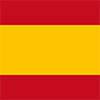The ruins of the old Yugoslav radar station at Gola Plješevica, Croatia
After World War II, the communists established a dictatorship on the territory of the former Kingdom of Yugoslavia.
That dictatorship, headed by Josip Broz Tito, distanced itself from the Soviet bloc directed from Moscow, adopting a very peculiar foreign policy, which did not avoid contacts with Western countries. In defense policy, the curious situation in Yugoslavia forced it to monitor two fronts: that of NATO and that of the communist dictatorships grouped in the Warsaw Pact (PACVAR). This explains, in a way, the point chosen for the installation of one of its air defense radars.
That point was Gola Plješevica, a mountain 1,648 meters above sea level, located right on the border between Croatia and Bosnia. The radar installed on its top, a British Marconi S-600, had a range of 400 km and could monitor possible incursions from Italy (a NATO member), Hungary ( member of PACVAR) and Austria (a neutral country).
During the Croatian war of independence, the summit of Gola Plješevica was in the hands of the Serbian military (who destroyed much of the place before abandoning it) until it was liberated by the Croats in 1995. Subsequently, This facility was used as a communications center by the NATO Implementation Force (IFOR) between 1995 and 2004, according to zeljava-lybi.com.
Last year, Croatia Infiltration published an interesting video exploring these ruins, including the underground parts of this former military installation. The video is in Croatian, you can activate the automatic subtitles in English in the bottom bar of the player:
You can see some screenshots from this video below:

Two aerial images of the old Gola Plješevica radar station. In the image below we see the telecommunications antennas of this facility in the background.

The video includes graphics showing the underground parts of the radar station. A very well done visual production.

Images painted inside the installation by British and Canadian NATO soldiers during the time in which IFOR was active on this peak.

|
Don't miss the news and content that interest you. Receive the free daily newsletter in your email: Click here to subscribe |
- Lo más leído
- A large collection of Volkswagen cars hidden in an abandoned mine in Switzerland
- Sabbione: a beautiful Swiss town that looks like something out of 'The Lord of the Rings'
- An old Soviet military plane abandoned from 1971 on a Russian island near Alaska
- The supermassive black hole of Phoenix A, the biggest known light-devouring monster
- The final destination of an old Fiat G.91 Gina fighter on top of a mountain in northern Italy
- The Maid of Harlech: the P-38 fighter that was buried on a beach for 65 years
- The unknown Soviet female cosmonaut who died on a mission: history or hoax?

 ES
ES





Opina sobre esta entrada: